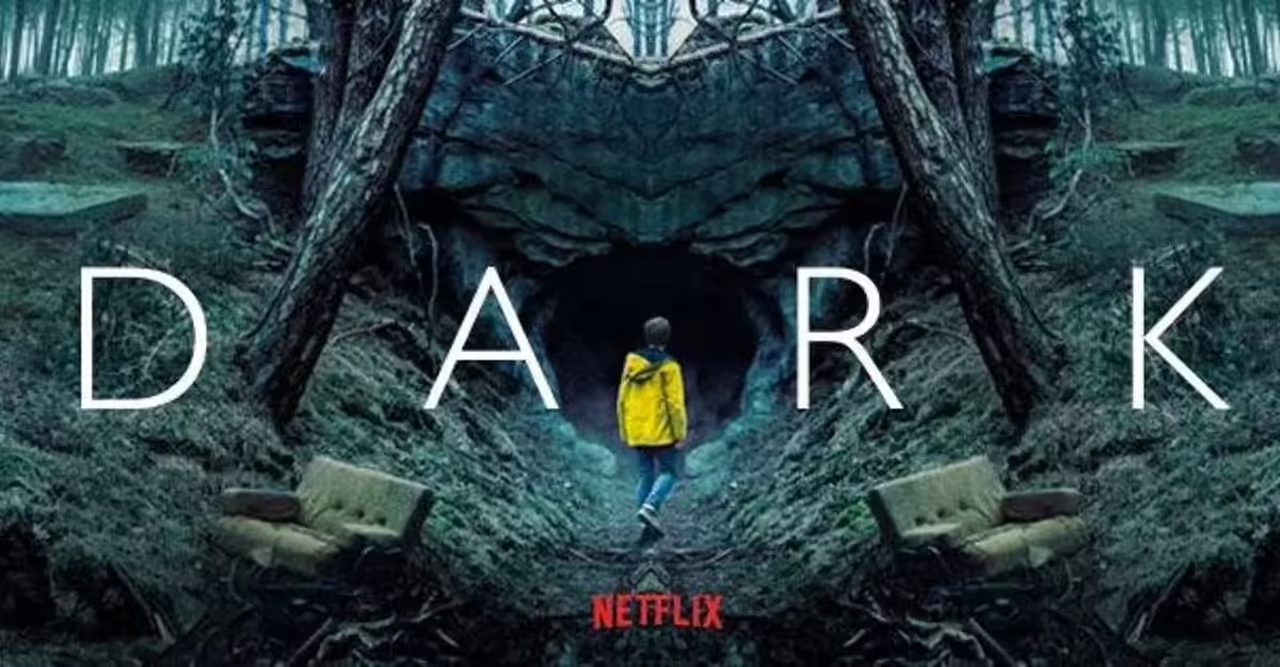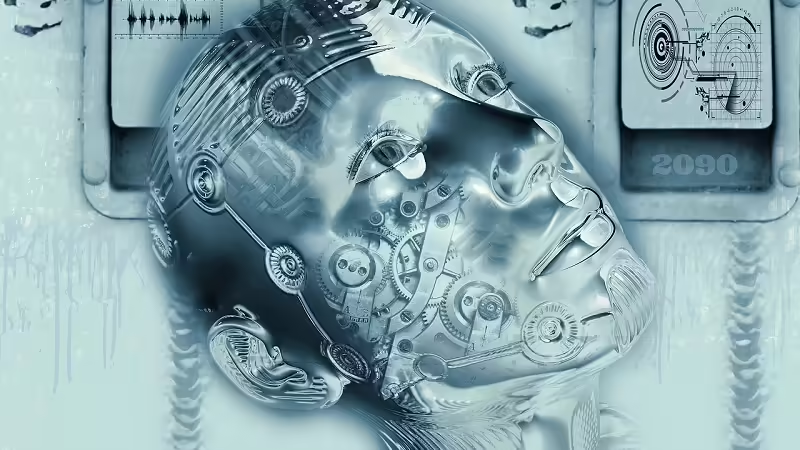
In the vast ocean of the television world, we often come across hidden gems that manage to captivate audiences and leave a lasting mark on the genre to which they belong. One such gem is “Dark,” a German sci-fi series that has gained international recognition for its complex narrative, bleak aesthetics and focus on the mysteries of time and fate.
Created by Baran bo Odar and Jantje Friese, “Dark” is set in the fictional small town of Winden, where the disappearance of a young boy triggers a series of supernatural events that reveal a complex web of secrets and connections between local families. As the plot unfolds, time travel, temporal paradoxes and an endless cycle spanning several generations are uncovered.
What makes “Dark” unique and captivating is its meticulous focus on consistency and attention to detail. The series features multiple interwoven timelines, which can be disconcerting at first, but as viewers delve deeper into the narrative maze, they realize that every detail has a purpose and a connection to the overall story. Every character, every seemingly insignificant event and every conversation takes on deeper meaning as the series unfolds.
The visual aesthetic of “Dark” also deserves praise. The series immerses itself in a somber, oppressive color palette that adds to the sense of mystery and darkness that permeates each episode. Dark landscapes, gloomy forests and mysterious caves create an eerie atmosphere that envelops viewers and immerses them completely in the world of the series.
But beyond its technical and aesthetic aspects, “Dark” stands out for its exploration of universal themes such as free will, determinism and the cyclical nature of time. The series raises profound questions about human existence and our connections to the past, present and future. As the characters struggle to unravel the temporal conundrums that surround them, they are also forced to confront their own personal tragedies and examine how the choices they have made in the past affect their present and future.
“Dark” is a testament to the quality and talent to be found in the German television industry. Its international success has proven that a good story can transcend language barriers and resonate with audiences around the world. The series has been praised for its complex and challenging narrative, intelligent writing and compelling performances.
Unraveling the Mysteries of ‘Dark’: A Journey Through Time and Destiny
The German sci-fi series, “Dark,” has left an indelible mark on the television genre with its complex narrative and its exploration of the mysteries of time and fate. Created by Baran bo Odar and Jantje Friese, this series immerses us in a world where hidden secrets and family ties intertwine throughout different eras, creating a fascinating temporal puzzle.
The plot of “Dark” unfolds in the small town of Winden, where the disappearance of a child triggers a series of events that reveal a web of hidden connections between local families. As the story unfolds, we realize that there are multiple intersecting timelines, with characters spanning decades and generations. These time travels add an additional layer of intrigue and complexity to the plot, challenging viewers to solve the puzzle and unravel the truth hidden in every nook and cranny.
One of the highlights of “Dark” is its meticulous focus on detail. Every character, object and event in the series is carefully connected across time, creating an intricate and well-constructed narrative structure. The creators of the series have demonstrated meticulous attention to every element, even in the small details that may go unnoticed at first. This attention to detail not only keeps viewers on their toes, but also shows the creators commitment to the quality and consistency of the story they are telling.
The visual aesthetic of “Dark” also plays a key role in immersing viewers in its shadowy and mysterious world. The dark, muted color palette creates an oppressive atmosphere that reinforces the tone of the series. The rainy landscapes, misty forests and dark caves bring a sense of unease and bewilderment, transporting viewers into a world where nothing is as it seems. The combination of carefully crafted cinematography and atmospheric music further contribute to the creation of a captivating visual and aural experience.
But beyond its complex plot and evocative aesthetic, “Dark” addresses deep themes that transcend the science fiction genre. The series explores the notion of free will versus determinism, raising questions about the extent to which our lives are fated or whether we have the power to change our destiny. As the characters face their own tragedies and struggle with temporal paradoxes, they are forced to reflect on the meaning of human existence and the interconnectedness of all things.
“Dark” has succeeded in winning both critical and public acclaim, becoming a global phenomenon. Its success lies in its ability to keep viewers on edge and challenge them intellectually. Each episode is carefully constructed, revealing new layers of the story and surprising revelations that keep interest constantly growing.
In addition, the performances in “Dark” deserve special recognition. The cast is comprised of talented actors who bring to life complex, multi-dimensional characters. Their ability to portray different versions of their characters throughout the various timelines is impressive and adds emotional depth to the story. Each performance is compelling and contributes to the overall impact of the series.
“Dark” is also an outstanding example of the quality of German television production. The series demonstrates the talent and creativity of German film and television professionals. The series’ attention to detail, intricate storytelling and technical excellence have elevated it to an internationally recognized level, opening doors for more high-quality productions from Germany.
The characters of ‘Dark’: Delving into their motivations and relationships
One of the most outstanding strengths of the “Dark” series is its cast of complex and well-developed characters. Throughout the different timelines and generations, these characters are woven into an intricate web of relationships and motivations that drive the plot and add emotional depth to the story.
One of the central characters is Jonas Kahnwald, played by Louis Hofmann. Jonas is the entry point for viewers into the world of “Dark.” As he uncovers his family’s secrets and the hidden truths of Winden, he becomes a tormented protagonist constantly searching for answers. His personal journey leads him to question his own identity and deal with the weight of fate and temporal paradoxes.
Another key character is Ulrich Nielsen, played by Oliver Masucci and his younger version by Ludger Bökelmann. Ulrich, a detective for the Winden police, is obsessed with solving the mysteries surrounding the disappearances of children in the town. As he delves into Winden’s dark secrets, he is faced with difficult decisions and the consequences of his actions in different times. The complexity of her character lies in her struggle for justice and her desperate quest to save her family.
Martha Nielsen, played by Lisa Vicari, is another central character in the plot of “Dark.” As the series progresses, we discover different versions of Martha in different timelines, which adds an additional layer of intrigue and complexity to her character. Her relationship with Jonas is a mainstay in the series, and their intertwined fates reflect the cyclical and fated nature of time in “Dark.”
In addition to these main characters, “Dark” features a large cast of equally important supporting characters. Each has their own motivations and developmental arcs, bringing additional nuance to the overall plot. The series explores complex family relationships, buried secrets and emotional ties that cut across timelines, creating a web of connections that spans decades.
The depth and complexity of the characters in “Dark” are enhanced by the outstanding performances of the entire cast. The actors manage to convey the emotional charge and duality of their characters throughout the different eras, making the connections and conflicts between them all the more palpable.
The fascinating symmetry of ‘Dark’: an analysis of its narrative structure
As we dive deeper into the series’ intricate temporal labyrinth, we can appreciate the careful construction of its structure, which brilliantly reflects the cyclical and interwoven nature of the story.
One of the ways in which “Dark” achieves this narrative symmetry is through its masterful use of different timelines. The series features three main time periods: 1953, 1986 and 2019, but as the story progresses, other eras are explored and broader connections are revealed. Events that occur in one timeline directly affect the others, creating a temporal cycle in which past, present and future are inextricably connected.
This cyclical structure is reinforced by the repetition of key events throughout the different eras. Scenes and situations are repeated at specific times, but with subtle variations that add new layers of meaning. These repetitions not only help viewers follow the complex plot, but also highlight the idea that history repeats itself and that the characters are caught in a time loop.
In addition, the series uses visual and symbolic parallels to accentuate the symmetry of its narrative structure. Key locations, such as the cave, the forest and the laboratory, are depicted similarly in different epochs, reinforcing the idea that time is circular. Recurring objects and symbols, such as the hourglass and the red thread, also reflect the connection and balance between the different periods.
Another notable aspect of the narrative structure of “Dark” is its focus on shocking plot twists and surprising revelations. As the story unfolds, the connections between characters and events become increasingly clear, and what seemed to be an insignificant detail in one timeline takes on new meaning in another. The series constantly challenges us to reevaluate our perceptions and reconsider what we thought we knew.
This carefully constructed, symmetrical narrative structure of “Dark” is a testament to the talent of its creators and writers. The series immerses us in a world where past, present and future converge, and every detail has a purpose and a connection. The narrative symmetry reinforces the series’ central idea that time is an endless cycle and that our actions have consequences that transcend time barriers.







